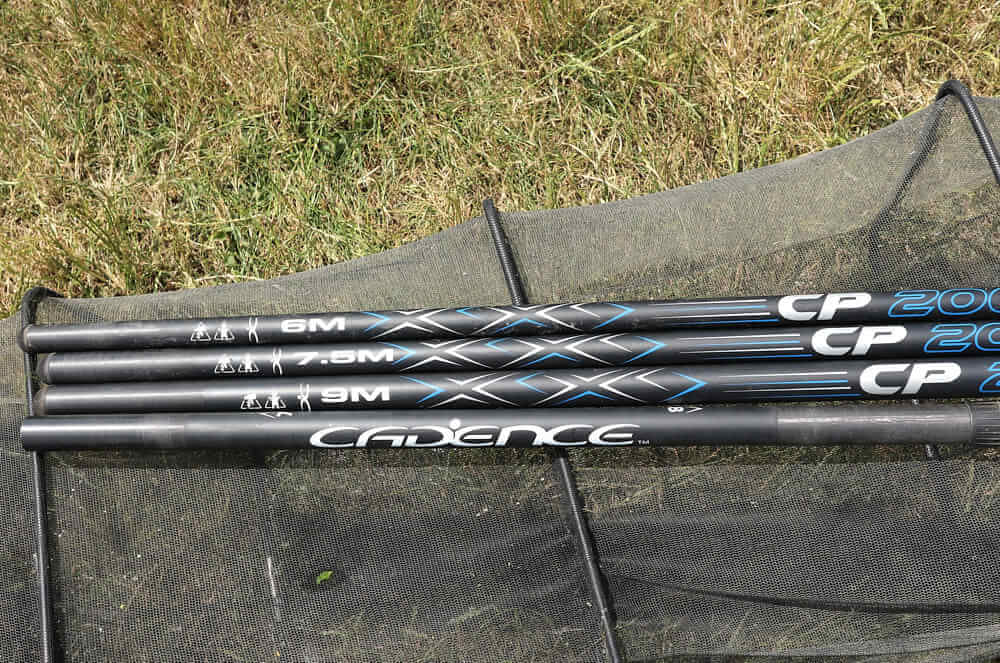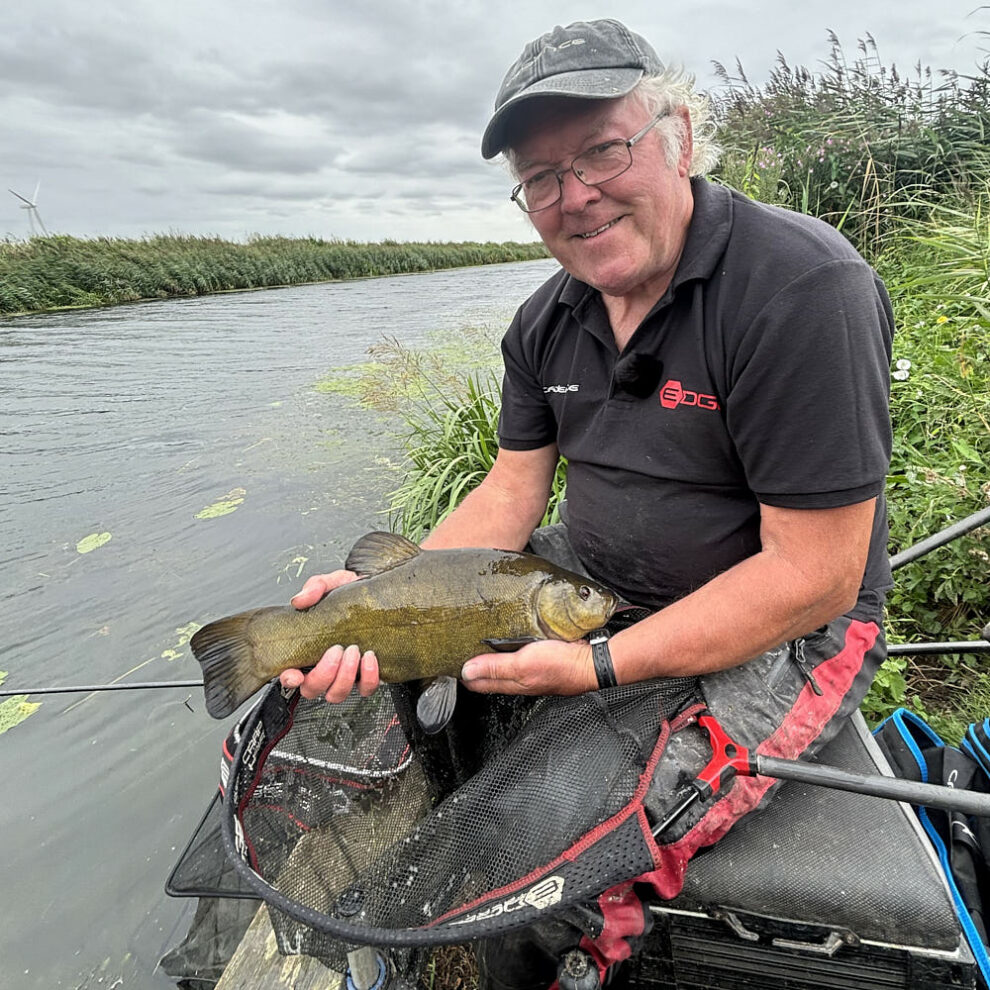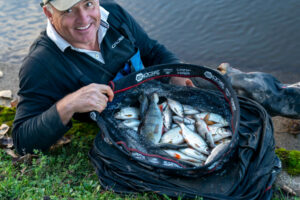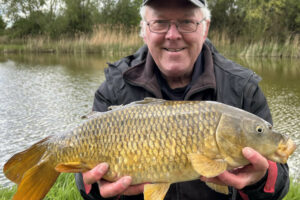Catching Up
This was a couple of years ago on a local river, where I was enjoying a great session with my Cadence CP200 Whip. Back then, I was using favourite pole floats that had been in my seat box many years. They still worked okay, but gradually some were looking tired and needed replacing. Others have since been revamped, rigged up slightly differently, to suit venues I now visit more regularly. It’s all about presentation, which demands having a wide selection of float sizes and matching bulk weights. These need to cover the various depths encountered and related whip lengths they require. Long lining, which entails fishing pole tackle to-hand, is very demanding. To work properly it requires robust mono, tough floats and neatly arranged loadings. Any stoppages, if things go wrong with such a busy method, can severely affect catch potential.
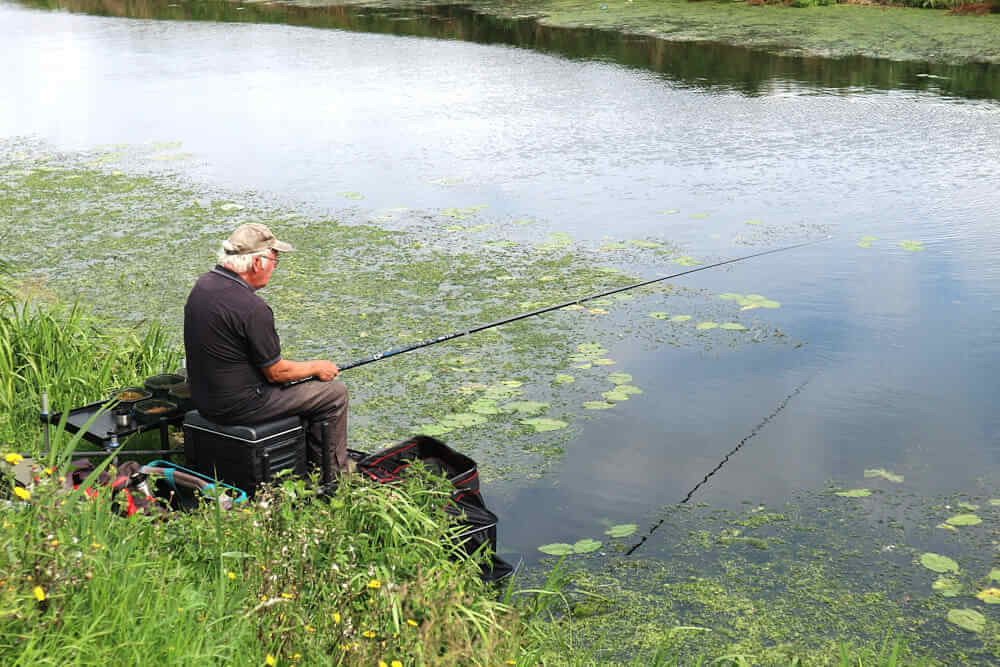
Starting Over
During the close season, I noticed new Guru Tungsten Olivettes in my local tackle shop. I was using tungsten bulk weights several decades ago, but gradually running out of them, forced to switch to bigger brass versions. I preferred tungsten because its density makes olivettes significantly more compact, dramatically reducing resistance. That applies to how they travel when swung out and the way they perform in water. You can get away with smaller sizes to achieve good presentation, making end tackle more streamlined. I immediately set about revamping many of my whip rigs using the new bulks. I rely on 0.14mm or 0.165mm Edge Premium Mono as main line for this, which takes plenty of punishment. Olivettes are locked firmly in place with fine bits of bristle, adding any extra weight that’s needed around them.
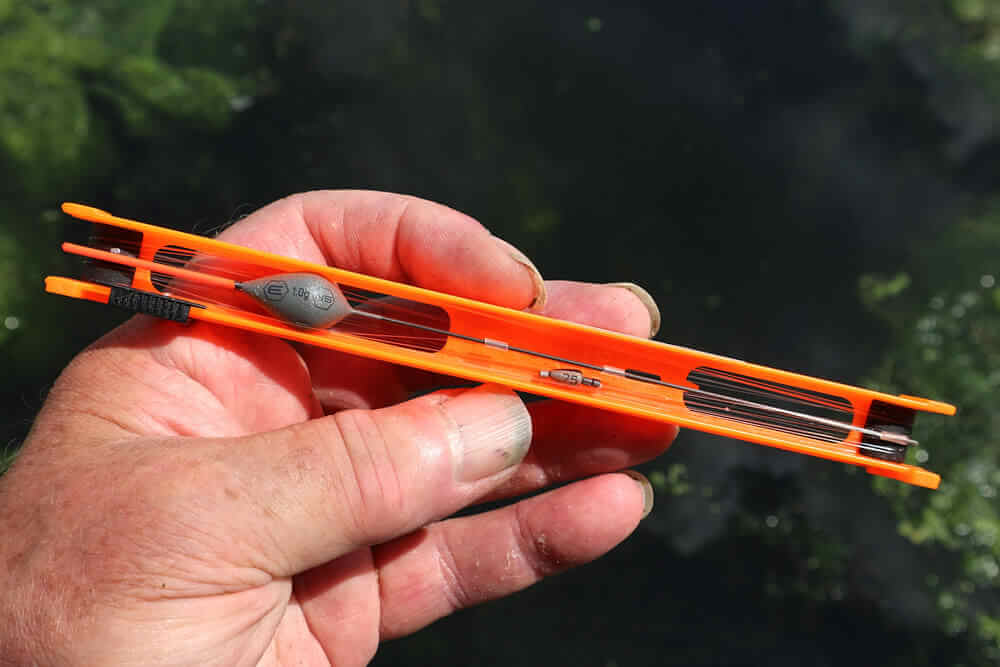
Just Right
Something that hasn’t changed is the size of groundbait balls I feed regularly with whip tackle, making them just big enough to reach the required distance. Consistencies might vary, depending on depth and trying to bypass small fish. The equivalent of a golf ball is about right, heavy enough to throw a good way, without being too intrusive. Fish get used to feeder sized amounts like this, allowing swims to be built up and kept ticking over for long periods. Casters, a few dead reds and micro pellets are normally fed in dark, stiff groundbait. Binding mixes help to get through troublesome bleak and tiny rudd. Whip fishing is an attacking method, so plenty of groundbait and freebies are needed to pull interest. No matter how careful you are, a fair amount is likely to be lost to small stuff, so having too much is better than running out.
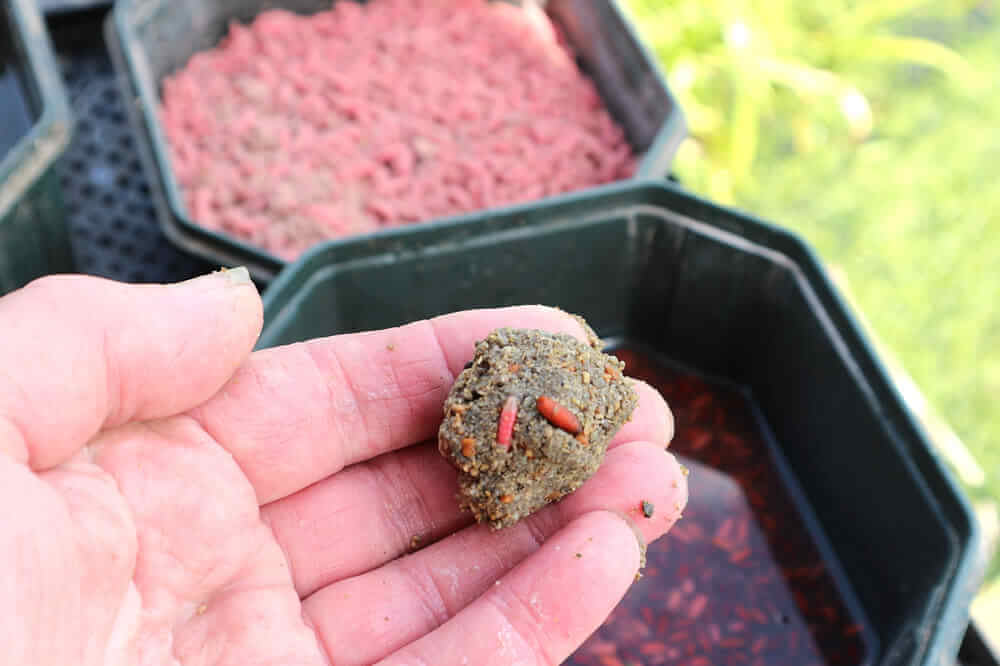
Top Float
Edge N6 Pole Floats are ideal for positive whip fishing. The main line is threaded through a conventional side eye, then a tube in the bulbous body, before being locked on the carbon stem with silicon tubing. On deeper drains I use the 2g and 3g sizes most, weighted down with closely matched olivettes, aiming to keep rigs simple and thus less tangle prone. I don’t see any need to string micro shot below bulk weights, instead attaching longer hook lengths in this area. They have small loops that act like stiff booms, preventing hook baits from wrapping back around the olivette. Most of the time I use two or three spread number 10 dropper shot at the business end, anchoring any extra fine-tuning weights back around the bulk. It’s best to use a minimum of three pieces of silicon tubing to lock big pole floats on the line, just in case one splits.
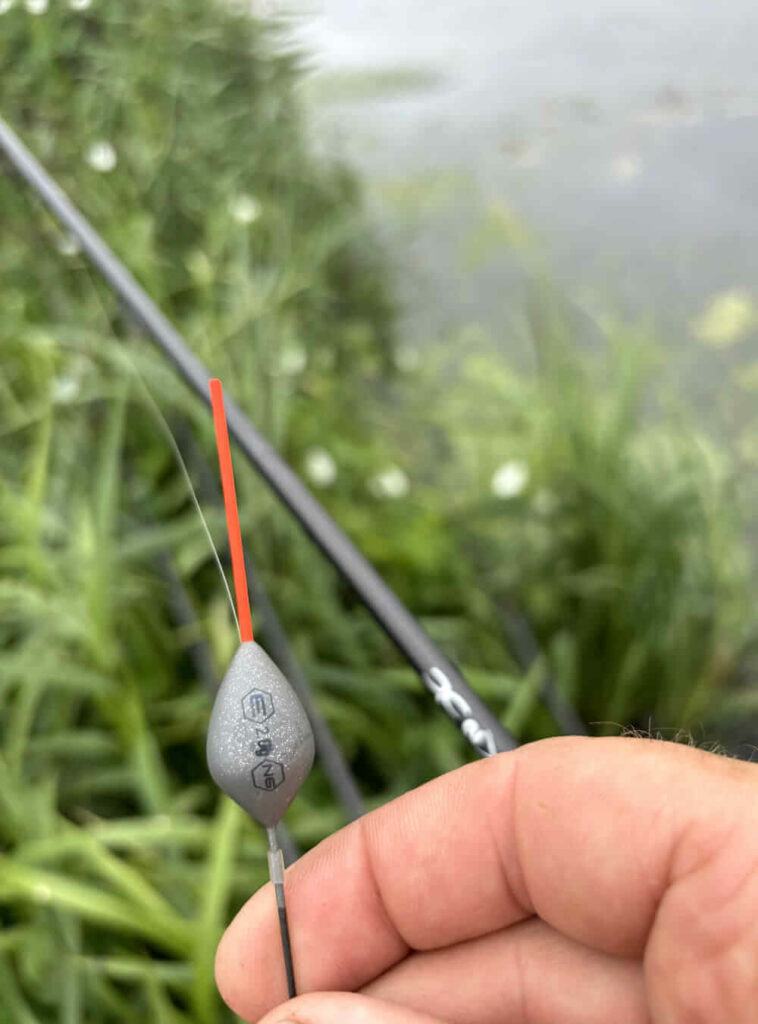
Range Finding
Long lining works particularly well on clear water venues and in bright conditions because, as you can see here, the whip’s flick tip is positioned well away from the float. Not throwing a shadow over the end tackle makes a big difference when conditions are like this. First week this season I found the top layers of the river moving, but deeper down it was almost standing still. That made it tricky using a 7-metre rig because the surface flow and drift kept forming a downstream bow in the line. Quite a bit of floating weed was drifting down as well, so I tried shortening the rig and pole length, eventually ending up at 5 metres. That gained much better control, just beyond the inside bank of thick marginal weed. A bit dodgy if I hooked into anything big, but the priority was to get the float working properly and to encourage plenty of bites.
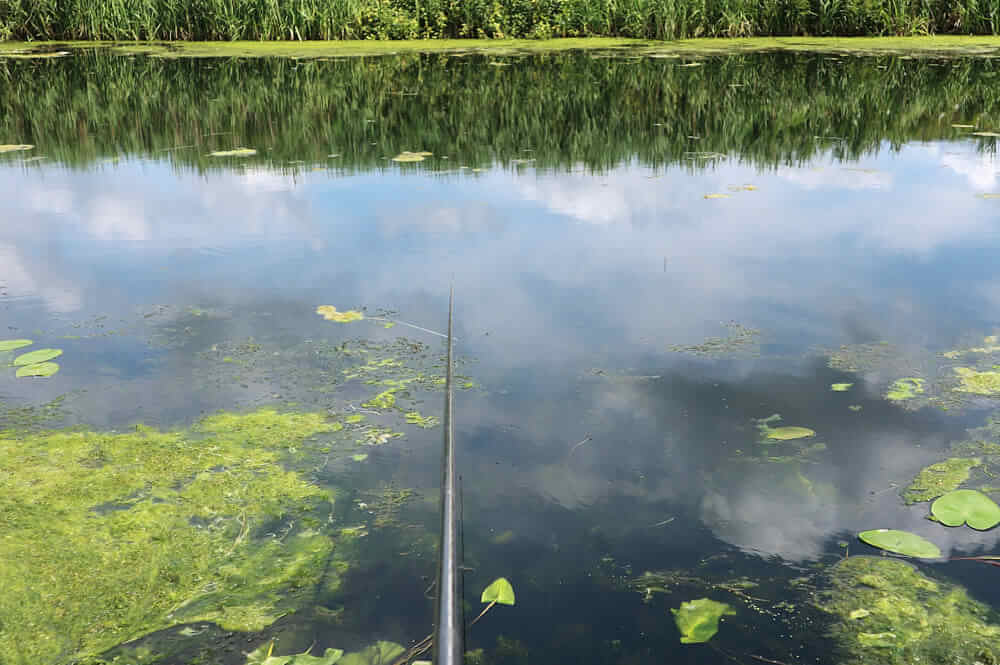
Familiar Pattern
Once regular feed was going in the swim, it didn’t take long before small rudd started attacking hook baits as they descended in the deep water. It was great to see because this species was largely missing last season. The year before, they were resident in large numbers, including some corkers around the two-pound mark. Hopefully, this was a good omen of what might be to come. Bleak also turned up, which I didn’t mind because small fish activity normally alerts anything bigger to join the party. Hand-sized skimmers were next, finding those by dumping the rig in, trying two dark casters on the hook to get through the bits. It was blazing hot and noticeable most action was coming close to the thick band of weed on the inside. Features like this on high banked dredged venues are often the only ones you can make use of.
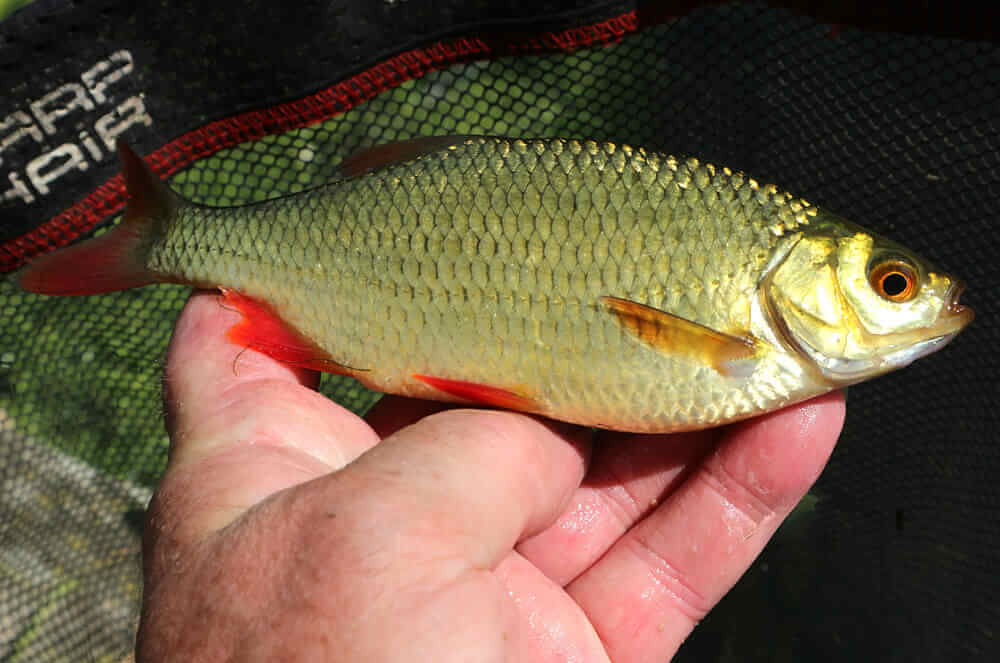
So Compact
Comparing the size of a new Guru 1.75g tungsten olivette I was using, next to a double caster offering, lets you see how incredibly small these weights are. In this instance, it was matched up with a 2g capacity pole float, requiring a few extra fine-tuning micro shot around it. The bulk weight was pegged on the main line anyway, to prevent any unwanted movement. As mentioned earlier, I use long hook lengths attached loop to loop style, which helps to kick everything away and prevent tangles. Even when dumping the rig in to get down fast, no problems resulted. I had 0.12mm Edge Premium Mono at the business end, with three equally spread-out number 10s, running down to a medium wire size 18 hook. I’ve always been ultra-fussy about keeping end tackle as neat and unobtrusive as possible. It doesn’t get much better than this.
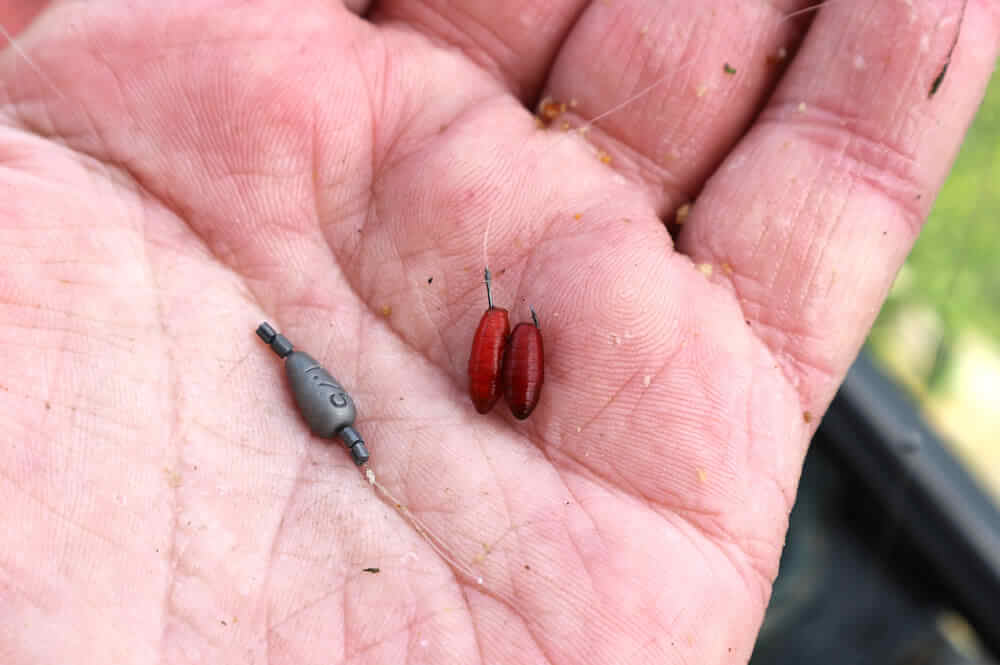
Good Info
Steep flood banks are tricky, so I don’t want to be getting up and messing about adjusting rigs after settling on my seat box. I’ve solved this by spending time working out how many turns of line each size of pole winder requires, to cover various whip lengths. These range from 4 metres up to 9 metres, stepping up to bigger winders as floats get larger. Small stickers on the side list line diameters, olivette sizes, dropper shot numbers and hook details. This lets me know what’s needed if something gets lost or needs to be replaced. It’s hard work making up rigs this meticulously, but worth it when it saves valuable fishing time. I use plain stickers that can be bought from newsagents, noticing customised pole winder stickers are also available these days. Not a new idea because I designed some for Middy Tackle over 30 years ago.
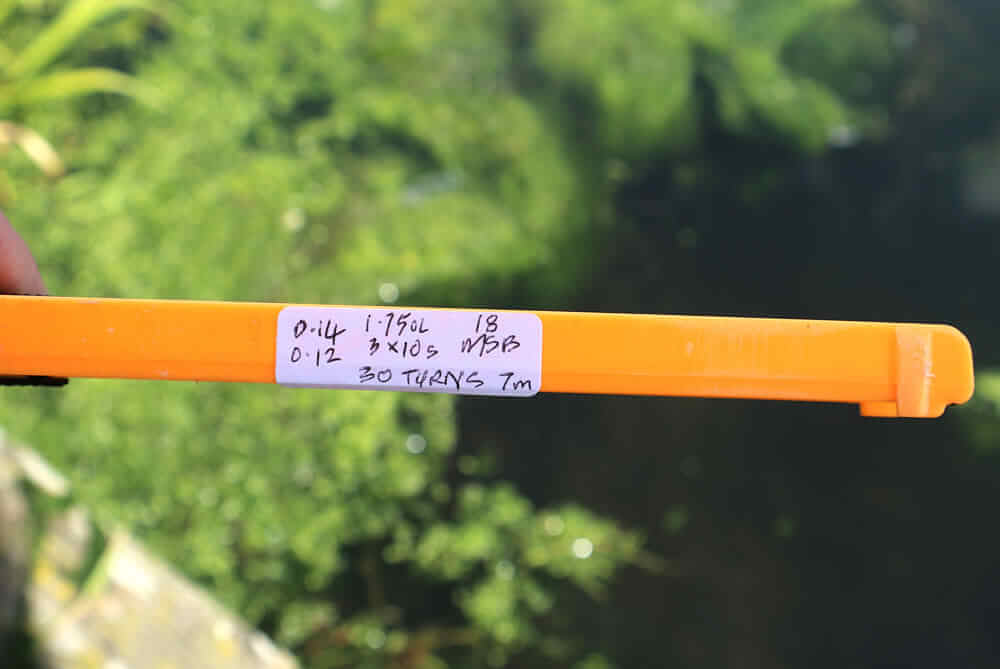
More Recent
This was last year, when my Cadence whip continued to see plenty of action, accounting for some surprisingly sizeable fish. It’s a great way of mastering weedy venues, where long poles and short line rigs tend to see the line getting covered in debris too easily. That happens less often with the whip because you can lay and adjust the line over the top of any floating stuff. Unshipping longer poles back over high banks behind, often pulls tackle through surface weed, which is time-consuming to have to keep removing. It can also be awkward unshipping pole sections over high banks. None of that is needed with the whip, which is much easier to hold on such wind affected places, being that much slimmer and lighter. It’s just a case of taking your time and being as careful as you can with anything big that puts in an appearance.
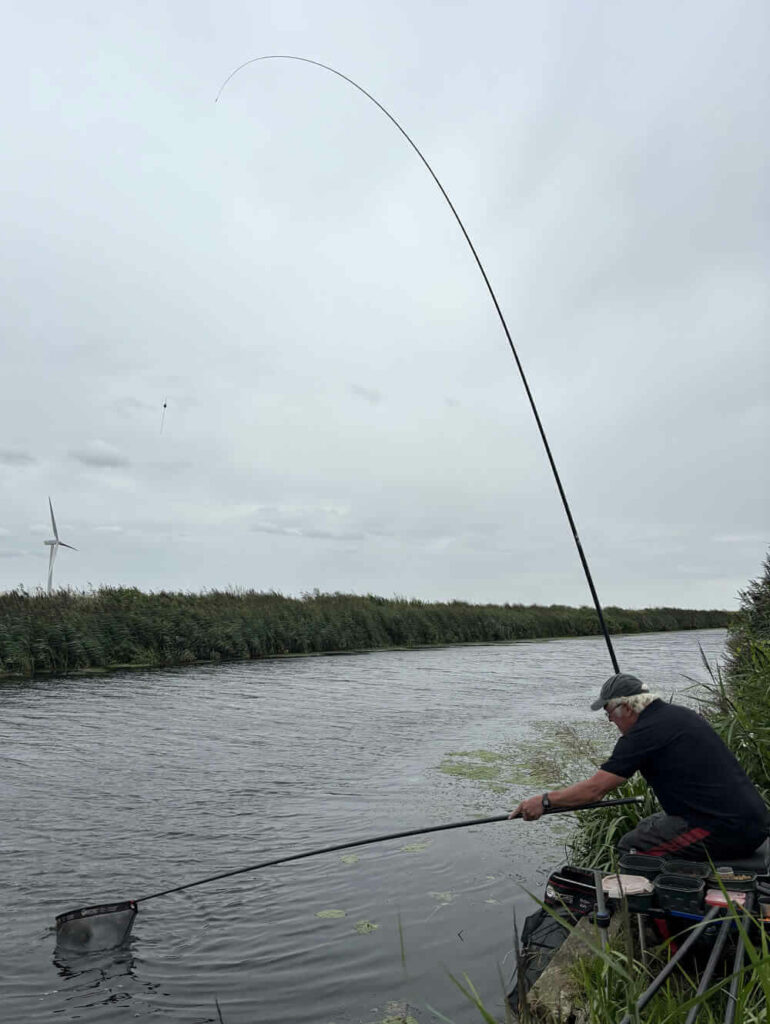
Bonus Time
Last year I lost count of how many big fish my whip accounted for, simply relying on the cushioning effect of a carbon flick tip. There is a trick to this, not being tempted into exerting too much pressure, once relatively light rigs become attached to something weighty and powerful. Hitting or pulling too hard provokes big intruders into steaming off on unstoppable runs. If you resist the temptation of being heavy-handed and prevent that first burst of energy, chances of landing whatever you are connected to increase dramatically. It’s a case of holding on, gently increasing pressure. The aim is to get fish like this off bottom, while keeping well away from any nearside weed or lilies. Sometimes tench like this will still find underwater growth, suddenly making everything go solid. The only hope then is to patiently keep applying steady pressure.
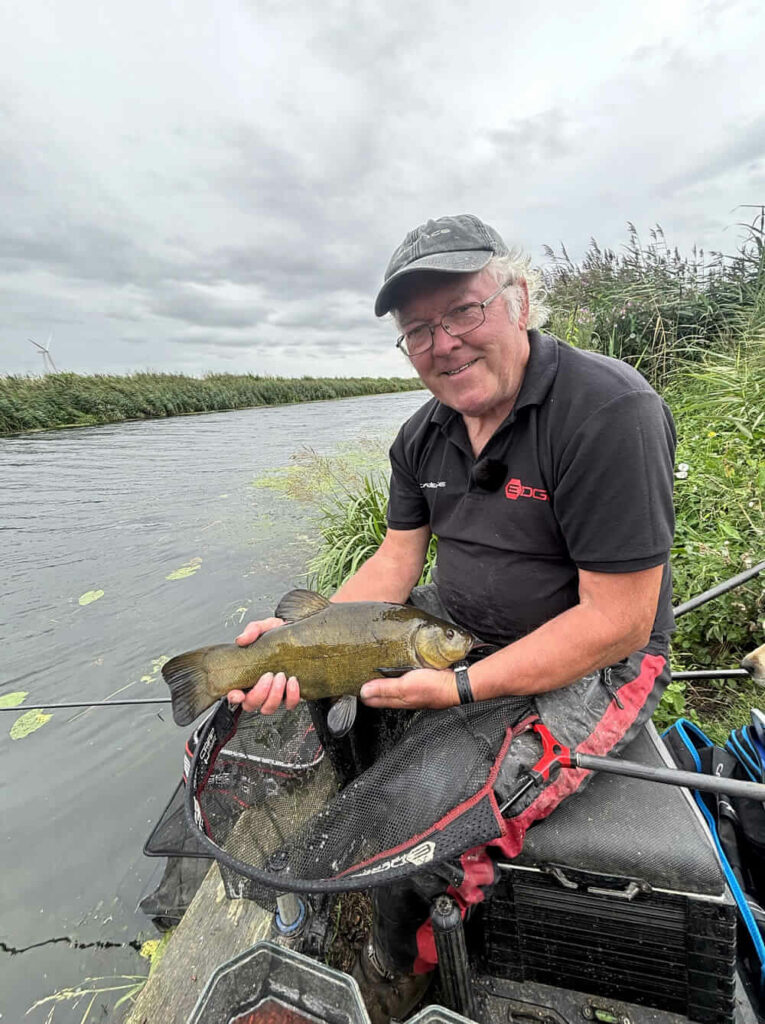
Repeat Performance
Back to the present, and my first river outing of the new season saw me catching plenty of fenland rudd and small skimmers, along with a few perch. As is often the way with the whip, constant groundbait going in eventually pulled a fast bite from something much bigger. On this occasion, I couldn’t stop it from slamming into a thick bank of margin weed. You normally feel a slight thump if the hook gets transferred, but that didn’t happen, so I played the waiting game. Maintaining steady pressure, gradually everything slowly began to lift upwards. Suddenly, a big clump broke loose, and I could see this tench tamely following behind. Its head was covered in thick blanket weed, and it simply gave up. I netted the lot, which was not the first time something like this has occurred. After that, I finished off with a welcome bonus 3lb bream.
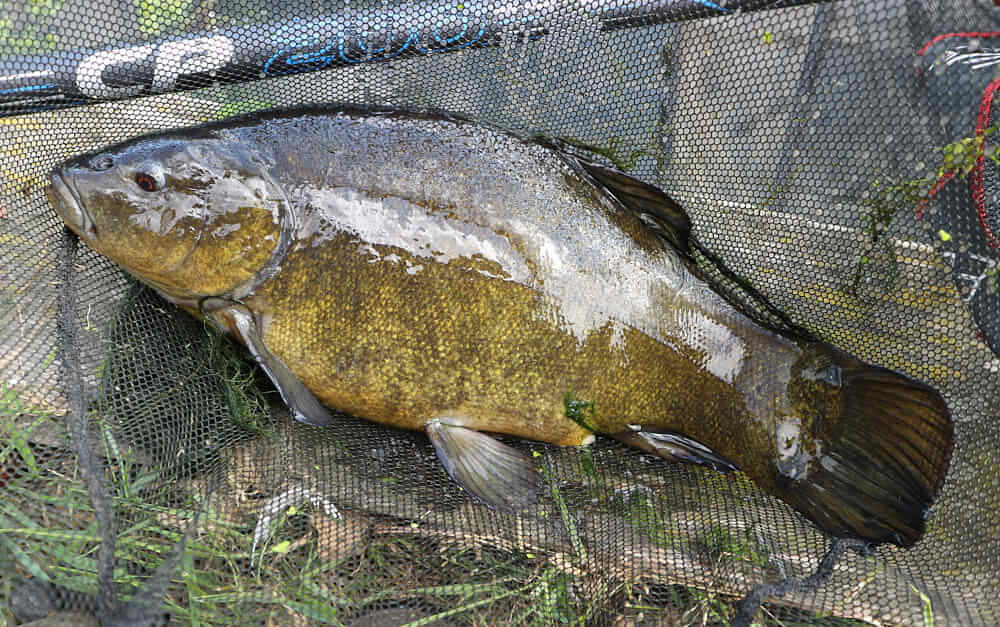
Versatile Kit
I have the complete CP200 Whip Package, which at longer lengths provides 6m, 7.5m and 9m options. This covers a diverse range of venues I now regularly visit on the fens. There’s also a short extension that fits lower sections, useful for swinging better quality fish in, or searching out a bit further. I initially employed longer whip lengths and attacking pole floats over in Ireland, while this technique saw much less use over here until recently. But now I have loads of prolific drains and rivers on my doorstep, it’s a technique I can enjoy all over again. It’s particularly good for weedy places, where swinging tackle in and out helps to avoid too much green stuff clogging up the end tackle. There’s no faster way of bagging up on wild and windy waterways in my experience. I’ve updated all my whip rigs now and they are performing even better.
